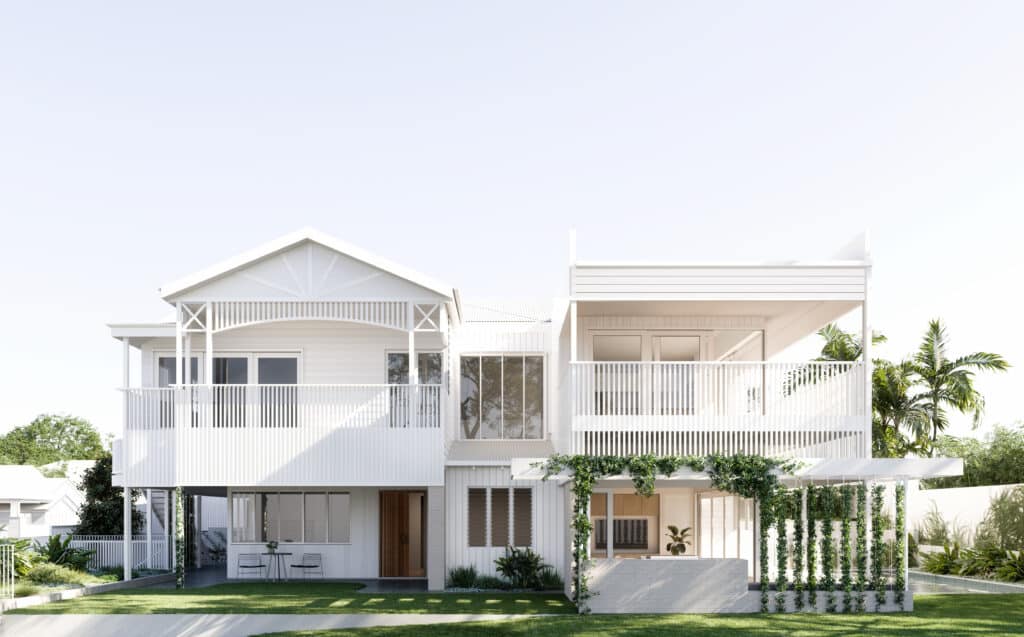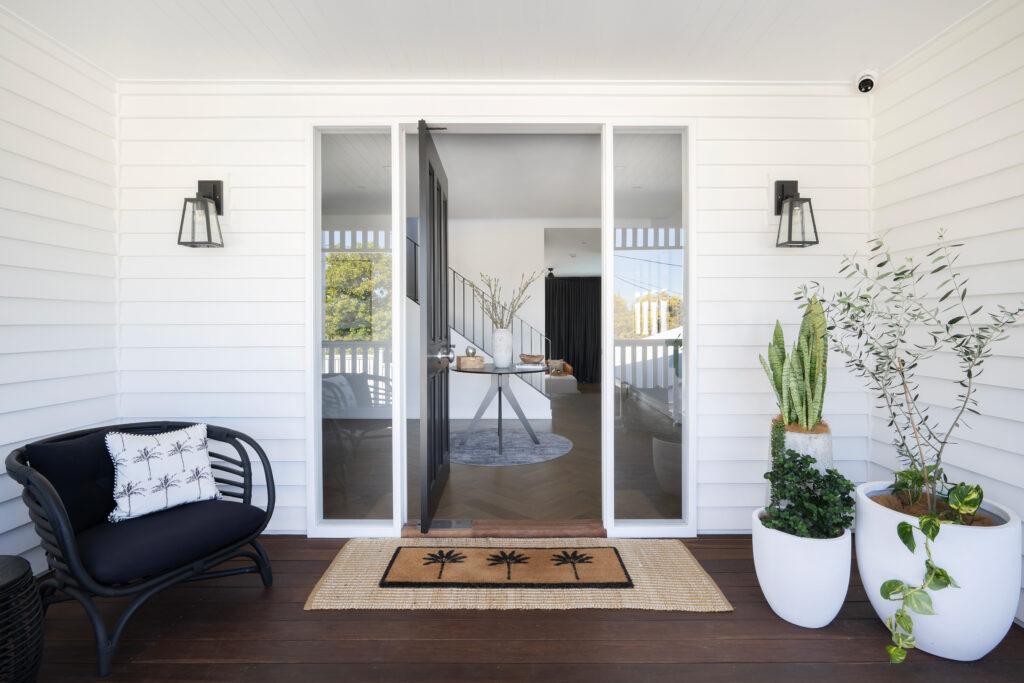How To Strategically Plan Your Budget for a Luxury Custom Home

Embarking on the journey of building a luxury custom home is an exciting process for you and your family. Choosing everything you want from your dream home: from the layout to the lights, everything can be tailored to exactly what you want. But how can you create an accurate budget? In this article, we’ll cover exactly that; we’ll dive into the various factors that influence the overall cost and share top tips to help you maximise your investment. From site selection to choosing the right materials and managing unforeseen expenses, we’ve got you covered, ensuring your venture into luxury living is as seamless as possible.
Estimating the Cost of a Luxury Custom Home
As we’re sure you can imagine, the average cost of high-end custom homes in the Brisbane area can range significantly. This is down to numerous factors that we’ll get into, such as location, materials, and bespoke features.
- Location: Waterfront properties or homes in prestigious neighbourhoods like New Farm or Ascot can see more homes in the $5 million to $15 million range due to premium land costs.
- Material Costs: High-quality materials like imported Italian marble or sustainable hardwoods can come at a 15% – 20% premium.
- Design Complexity: Homes with particularly complex architectural designs and unique structural features, may also increase costs by 20% to 50%.
- Technology Integration: In the modern day, you may wish to incorporate advanced smart home systems and eco-friendly technology. This can add an additional $100,000 to $300,000 to the overall project cost.
At Watara Homes, we specialise in high-end custom home builds, with most of our projects starting from $1.5 million. If you’re looking to transform your dream home into reality with the right partner, feel free to get in touch with us today.

Factors Influencing The Cost Of Your Project
Site and Location Costs
Whilst most of the people who come to us already have this taken care of, you may still be at an earlier stage of planning the project. If so, your initial task should involve securing a plot of land for your construction and being aware of the costs associated with this.
The cost of land in Brisbane varies greatly. The most expensive area for land is Petrie Terrace at $5,515/sqm, whereas Rocklea’s land cost comes in at a little over $700/sqm.
Take a look at the land costs of the other sought-after areas you may be considering for your custom home:
- New Farm $5,329/sqm
- West End $5,217/sqm
- Spring Hill $5,157/sqm
- Paddington $4,381/sqm
Source: https://www.domain.com.au/group/media-releases/how-much-does-a-square-metre-of-land-cost-in-your-suburb/
Design and Architectural Features
Once you’ve picked where you want to build, the next factor that’s going to significantly influence your project’s final cost is the design you choose. Architectural features that cater to luxury preferences, such as high ceilings, number of doors and windows, and bespoke joinery, can elevate construction costs considerably. Opting for bespoke and intricate architectural designs is a great way to make your home stand out and reflect your personality. In terms of costs, further customisation would increase your costs by 20% to 40%, depending on the level of customisation and the materials used. Engaging with renowned architects who specialise in high-end residential properties also adds to the budget, due to their expertise in creating distinctive, sophisticated spaces that stand out amongst Brisbane’s luxury properties.
Materials Used
The choice of materials is also a big part of the aesthetics and cost of your luxury custom home. You may want to use imported, high-quality materials like Italian marble or Spanish tiles; or go for custom-milled hardwoods for the flooring or feature wall panels. The exciting thing about building your custom home is that you have true freedom. In the end, it will come down to what you want to prioritise in your home. For example, you may really want premium stone kitchen benchtops but may be content with more conventional materials for your bathroom vanities or laundry counters.
Energy-efficient materials, such as double-glazed windows or high-grade insulation, although initially more costly, can offer long-term savings on energy bills, making them a worthwhile investment for sustainable building practices. Additionally, the use of durable, low-maintenance materials can reduce long-term upkeep costs, ensuring your home remains both beautiful and functional for decades.
Given these variables, it’s crucial to carefully select materials that not only meet your vision for the home but also align with your budgetary constraints. Collaborating with your architect or designer can help navigate these choices, balancing cost with durability and aesthetic appeal to achieve a truly personalised result.
Regulatory and Permit Costs
Although it’s not as exciting as choosing your floor plan or picking out your bathroom tiles, getting the right permits for your custom home build is an essential part of the process.
Like a lot of things in the building process, the cost of obtaining necessary permits can vary significantly.
Here are some of the common costs for you to be aware of:
- Planning and Development Permits: These are required for new constructions and major renovations to ensure compliance with local zoning and building codes.
- Building Approval: You can obtain this from a building certifier. Building approval ensures that your home’s design complies with the National Construction Code (NCC) and local regulations.
- Environmental Compliance: Depending on the location and size of your property, you may need to address environmental concerns, such as waste management and water runoff.
In addition, working with heritage-listed properties or building in areas with strict architectural controls can significantly increase both the complexity and cost of obtaining approvals.
You can probably imagine that permits can have a significant impact on not just the budget, but the timeline of your project too. You’ll help yourself out a lot by factoring in these costs early and speaking with the designers, builders or architects you’re working with.
Labour Costs
When you’re choosing a builder to work with on your custom home, there are a few things you’ll want to consider regarding cost.
- Skilled Labour: High-end custom homes require skilled craftsmen for specialised work like custom joinery, intricate tiling and bespoke architectural features. Naturally, the cost for skilled craftsmen is typically higher due to their expertise and the precision required in luxury builds.
- Project Duration: This is heavily influenced by the design complexity and details; the more complex the design, the longer the project will take.
- Conditions of The Site: Not a lot of people think about the fact that challenging site conditions, such as steep slopes, limited access or the need for specialised equipment will also raise labour costs. These factors require additional time, safety measures, and sometimes more workers, impacting overall expenses.
Understanding these aspects and working with a reputable company that specialises in the type of home you’re looking to build will provide cost efficiencies and ensure high-quality results.

How You Can Remain On Budget
Step 1: Create Your Wish List
What are your non-negotiables? Space to entertain? A home office? Or maybe you’d like a private gym?
Regardless of what it is, starting with a list of must-haves for the home is an important first step.
From there, you and your family can go over the different things you’d like from your home, that may not necessarily be essential. This can be the types of materials you like or the way your windows and doors open. During this ‘wish list’ process, you’ll develop priorities for your home, and then you’ll get a bit more of an idea of what this will cost.
Step 2: Know Your Budget Before Starting Design
Before starting the design stage of your project, it is key to be comfortable with your budget as this allows your architect to design within a context. If they overestimate your budget, time is wasted for all involved by proposing something that doesn’t meet this, while underestimating your budget leads to a proposed project that may not live up to the potential of what could otherwise be created.
We need to have a realistic sense of your budget to be able to schedule a site visit, otherwise, time is wasted by considering possibilities that aren’t in line with your budget or ideal vision instead of focusing on how to create the most value for you as we possibly can.
Step 3: Contingency Planning
Not the most glamorous part of creating your budget, but the right contingency plan will result in less stress throughout the process.
Take a look at our top tips for building out a contingency plan for your custom home budget:
Take a look at our top tips for building out a contingency plan for your custom home budget:
- Allocate 10-15% of your budget to go towards unforeseen expenses.
- Get professional opinions from your architect and builder with the decisions you’re making; you’re not alone!
- Be flexible with your design choices and have back-up ideas in mind for the materials you’re going to use to avoid disappointment.
Step 4: Regular Budget Reviews
Maintaining a regular review of your budget throughout the building process is essential to ensure you remain on track financially. Here’s how you can effectively manage this critical step:
- Schedule Regular Meetings: Set up frequent meetings with your builder to go over the budget in detail. These should occur at key project milestones as well as frequent check-ins. This allows you to catch any discrepancies early and adjust plans as necessary.
- Ask Questions: If you have a concern, voice it! At Watara Homes, we fully understand that staying on budget is an important thing for all our clients. If you have anything you’re unsure about, we’d rather you ask than be worried about it, no matter how small it may seem.
- Transparent Communication: Ensure that there is open and honest communication between you and everyone involved in the building process. Transparency about costs, concerns, and unexpected issues helps to mitigate risks and manage the budget more effectively.
Considering Building a Custom Home in Brisbane?
We’d love to help you out if so. At Watara Homes, we specialise in luxury custom homes and major renovations and commit ourselves to executing on a premium standard. By working with us, you can be sure you’d have a supportive partner in your building project, every step of the way. We always encourage you to take the time to properly consider what you’re looking for in a builder, and speak with a few different companies to see who is the right fit for you. If you’re considering us for your building project, please get in touch.
